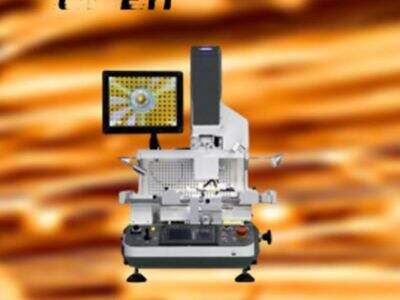We have pick and place that are absolutely amazing because that is how we position those small pieces onto the circuit board. So speech is still a lot of effort for us, which we appreciate. But sometimes it's hard to run these machines and we might discover some difficulty. In this article, we are going to talk about a couple of problems which we can encounter while working with these machines and their solutions for the same. It will make us work a little more easier and more fun.
More Tips For Getting Parts Just So
We ensure precise positioning of the minute pieces on the printed circuit board with the help of a pick and place machine. Ensure you fix the automatic smt pick and place machine suitably; if not, then the machine is not going to function. With some helpful hints here with, can direct us to the installation of parts in the suitable position.
Insights & Paradigm: Machine setup confirmation That is verifying the machine speed, how accurate it is and other critical settings. The whole thing will function better if everything's set right.
Use the right tools: The appropriate tools can be a big difference. Tweezers or vacuum nozzles are tools that allow us to place the parts more precisely on the board. Having the right tools make us more efficient at our work.
How to Prevent Feeder Jams:
Small pieces that clog the machine are a frequent reason for feeder jams. When this 'malfunction' occurs, the machine will malfunction and cease to function, which is extremely frustrating. But don't worry. Below are some tips on how to prevent and fix feeder jams:
Clean the feeders thoroughly from time to time: You need to clean the feeders at regular intervals of time. Cleaning stops us from getting jams. Which one can be cleaned with a small brush or vacuum cleaner to remove dust or dirt. The machine will work better if the feeders are cleaned.
Verify position: We should ensure that the components are aligned in the feeders at all times. Incorrect alignment of the components will result in jams. Through verification of alignment, jams never occur.
Take utmost care in pulling out jam: If a jam does happen, we need to be very cautious while pulling out the jammed piece. The aim is to pull it out without breaking or damaging the machine. Being cautious alone will ensure the machine is in operation.
Mistakes in led placement machine Programming — Correcting Them
Only on rare occasions was the pick and place machine perhaps being wrongly programmed. They are a useful tool but can get it wrong at times, since you don't want to have the parts installed in the incorrect place. Hereafter are a few steps we can take that help minimize those mistakes:
Double-check the program: Double-check the program before running the machine. That is, verify instructions to ensure that they're all accurate. It helps us to correct any errors before running the machine so we don't encounter issues later.
Bonus step: Try the program: This can be a real timesaver by conducting a test using some test parts. This prevents any issues from cropping up when we do use the actual parts. It's rehearsal for the big game, you know.
Updating the software: It is extremely important to keep the machine's software updated. It will assist us in minimizing programming mistakes when we update the software. It would result in a more effective and efficient working machine.
Keeping the Machine Accurate Over Time:
Here are some crucial tips to keep the pick and place machine in good working condition for a long period of time:
Maintenance routine: Like we have to take care of our toys or bicycle,machine pick and place we also have to take care of the machine. Cleaning the machine, tightening loose parts and greasing moving parts ensure accuracy. Fashion can be employed to denote clothes we put on every day.
Machine Calibration: Regular machine calibration is required. That means checking and calibrating the automatic smd machine so that it still functions properly. That is similar to calibrating a machine, so the more we do that, it could always remain stable and functioning.


